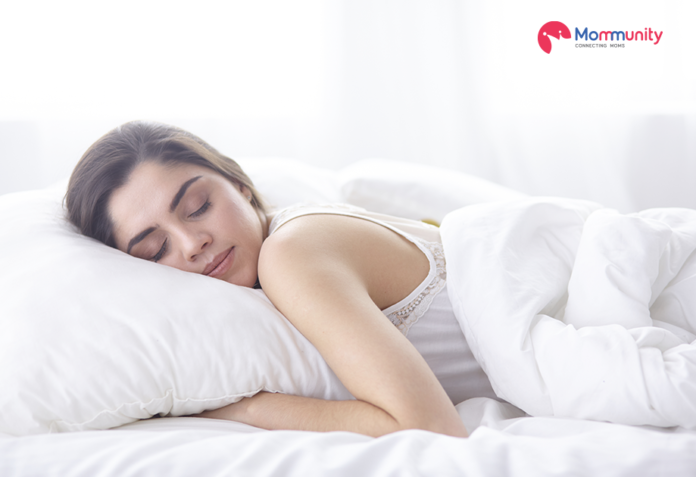|
Getting your Trinity Audio player ready...
|
Sleep is a fundamental aspect of human health, playing a crucial role in physical and mental well-being. However, there are intriguing differences in sleep patterns and requirements between men and women. Research has consistently shown that women need more sleep than men, but what lies behind this phenomenon?
In this blog, we delve into the scientific reasons and factors influencing why women require more sleep than their male counterparts.
1. The Science Behind Sleep Differences
Sleep is a complex process regulated by various biological and physiological factors. Understanding the science behind sleep differences in men and women helps shed light on why women may need more restorative rest.
A. Sleep Architecture: Unravelling the Sleep Stages
When we sleep, our brains go through different stages of sleep, known as non-rapid eye movement (NREM) and rapid eye movement (REM) sleep. NREM sleep comprises three stages that vary in depth, while REM sleep is associated with dreaming and emotional processing.
Research has shown that women tend to spend more time in REM sleep, which has been linked to improved memory consolidation and emotional regulation. This might explain why women often have more vivid dreams and why adequate REM sleep is crucial for their overall well-being.
B. Hormonal Influences on Sleep
Hormones play a vital role in regulating sleep patterns, and women’s hormonal fluctuations throughout the menstrual cycle, pregnancy, and menopause can significantly impact their sleep needs.
• Estrogens’ Role in Sleep Regulation: Estrogens, a primary female sex hormone, plays a key role in the sleep-wake cycle. During the menstrual cycle, fluctuations in estrogen levels can influence sleep quality. For instance, rising estrogen levels in the follicular phase are associated with increased REM sleep, potentially making women more susceptible to sleep disruptions before menstruation.
• Pregnancy and Sleep Changes: Pregnancy is a time of significant hormonal shifts, which can lead to changes in sleep patterns. Early pregnancy is often characterized by increased sleepiness and more frequent awakenings due to hormonal adjustments. In the later stages of pregnancy, physical discomfort and hormonal fluctuations can contribute to sleep disturbances.
• Menopause and Sleep Disruptions: During menopause, estrogen levels decline, leading to various physiological changes, including sleep disturbances. Hot flashes and night sweats can disrupt sleep, and hormonal fluctuations may contribute to insomnia and other sleep disorders in menopausal women.
2. Sleep Quality and Quantity in Women Compared to Men
The phrase “Women need more sleep than Men” holds true when comparing sleep duration and sleep quality between genders.
A. Sleep Duration Differences
Studies consistently report that women tend to get more sleep than men on average. While individual sleep needs vary, research suggests that women often require around 20-30 minutes more sleep per night compared to men. The reasons behind this difference are multifaceted, including hormonal influences, genetics, and lifestyle factors.
B. Sleep Efficiency and Sleep Fragmentation
Sleep efficiency refers to the proportion of time spent asleep compared to the time spent in bed. Women generally exhibit higher sleep efficiency than men, meaning they spend a greater percentage of time asleep while in bed.
On the other hand, sleep fragmentation, characterized by frequent awakenings during the night, may be more prevalent in women, impacting their overall sleep quality.
3. Biological and Hormonal Factors Influencing Sleep Needs in Women
Women’s intricate hormonal fluctuations throughout life stages can significantly influence their sleep needs.
A. Menstrual Cycle and Sleep Patterns
The menstrual cycle, governed by fluctuating levels of estrogens and progesterone, can influence sleep patterns in various ways. During the premenstrual phase, women may experience sleep disturbances, such as difficulty falling asleep, lighter sleep, and increased awakenings. These changes are thought to be associated with hormonal shifts and increased sensitivity to environmental factors.
In the early follicular phase, when estrogen levels rise, women may experience increased REM sleep, which could lead to more vivid dreams. In contrast, during the luteal phase, progesterone levels rise, potentially promoting deeper sleep.
B. Pregnancy and Sleep Requirements
Pregnancy involves significant physiological changes that affect sleep. During the first trimester, hormonal changes, such as increased progesterone, can lead to increased sleepiness and a higher need for rest. As the pregnancy progresses, physical discomfort and the need for more frequent trips to the bathroom can disrupt sleep, leading to higher sleep requirements.
C. Menopause and Sleep Disturbances
Menopause marks the end of reproductive years and is characterized by declining estrogen levels. This hormonal shift can lead to sleep disturbances, such as hot flashes and night sweats, which can disrupt sleep continuity. Additionally, hormonal changes during menopause can contribute to sleep disorders such as insomnia and sleep-disordered breathing.
4. Sleep Disorders and Prevalence in Women versus Men
Certain sleep disorders show higher prevalence rates in women, potentially contributing to their increased sleep needs.
A. Insomnia in Women
Insomnia, characterized by difficulty falling asleep, staying asleep, or waking up too early, is more prevalent in women compared to men. This higher prevalence is attributed to a combination of biological, hormonal, psychological, and social factors. During times of hormonal fluctuations, such as menstruation, pregnancy, and menopause, women may be more susceptible to developing insomnia.
B. Sleep Apnoea and Gender Disparities
Sleep apnoea, a condition characterized by repeated interruptions in breathing during sleep, is more commonly diagnosed in men. However, the prevalence of sleep apnea in women increases after menopause, suggesting a potential protective effect of estrogen before menopause. Women with sleep apnoea may experience symptoms differently from men, making diagnosis and treatment more challenging.
5. The Role of Estrogens in Regulating Sleep in Women
The hormone estrogens play a significant role in women’s sleep patterns and needs.
A. Estrogens’ Influence on Sleep-Wake Regulation
Estrogens receptors are found throughout the brain, including regions involved in sleep regulation. These receptors interact with neurotransmitters and other hormonal systems to influence sleep-wake cycles. Fluctuations in estrogen levels during the menstrual cycle, pregnancy, and menopause can directly impact sleep quality and quantity.
B. Potential Therapeutic Applications for Sleep Disorders
Given estrogens’ involvement in sleep regulation, researchers are exploring potential therapeutic applications of estrogens for sleep disorders in women. Hormone replacement therapy (HRT) has been studied as a treatment option for menopausal sleep disturbances, but its use requires careful consideration due to potential side effects and individual health risks.
6. Sociocultural Factors Influencing Sleep Habits in Women and Men
Beyond biological factors, sociocultural elements can also contribute to differences in sleep needs.
A. Work-Life Balance and Sleep
The demands of modern life, including work responsibilities and family obligations, can impact both men’s and women’s sleep habits. Women, however, may face additional challenges in balancing work and family life, leading to potential sleep disruptions. Juggling multiple roles can result in increased stress, which may further affect sleep quality and quantity.
B. Sleep and Mental Health in Women versus Men
Sleep and mental health are closely intertwined, with poor sleep contributing to mental health challenges and vice versa. Research suggests that women may be more vulnerable to the effects of poor sleep on mental health. For instance, women with insomnia are at a higher risk of developing mood disorders like depression and anxiety compared to men with insomnia.
7. Sleep Hygiene Tips Tailored to Women’s Needs
Empowering women with sleep hygiene practices to improve their sleep quality.
A. Creating a Sleep-Conducive Environment
A comfortable and soothing sleep environment is essential for restorative sleep. Keep your bedroom cool, quiet, and dark to promote better sleep. Invest in a supportive mattress and pillows to ensure proper sleep posture.
B. Establishing a Bedtime Routine
Developing a consistent bedtime routine signals the body that it’s time to wind down and prepare for sleep. Engage in relaxing activities before bed, such as reading, taking a warm bath, or practicing meditation.
C. Nutrition and Sleep
Pay attention to your dietary habits as they can significantly impact sleep. Avoid heavy meals close to bedtime and limit caffeine and alcohol intake, which can disrupt sleep.
8. The Importance of Napping for Women’s Well-being
Understanding the role of daytime naps in fulfilling women’s increased sleep needs.
A. Benefits of Napping
Napping can be an effective way to combat daytime sleepiness and boost cognitive function. For women who experience fragmented sleep or increased sleep needs due to hormonal fluctuations, a well-timed nap can be rejuvenating and enhance alertness.
This six-letter word when uttered by someone means there is a problem. A problem that is causing you anxiety. A problem that triggers a certain biological response. Stress often triggers a fight or flight response in your body after which the body should certainly relax. But too much stress can definitely impact your body in a negative manner. And why take stress when you can do a million little things to stay happy instead?
Conclusion:
In conclusion, the statement “Women need more sleep than Men” is supported by a wealth of scientific evidence. Biological, hormonal, and sociocultural factors all play significant roles in influencing women’s sleep needs. Understanding these factors empowers women to prioritize their sleep and overall well-being, ensuring they get the restorative rest they need to thrive in their daily lives.
By implementing healthy sleep practices and seeking necessary support for sleep disorders, women can enhance their quality of life and lead a more balanced and fulfilling existence. Prioritizing sleep as an integral part of health and well-being is essential for everyone, but recognizing and addressing the unique sleep requirements of women can promote better sleep and overall health in the female population.




